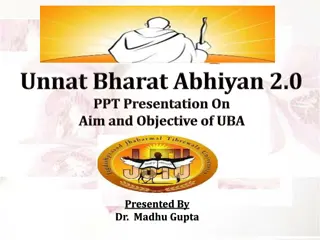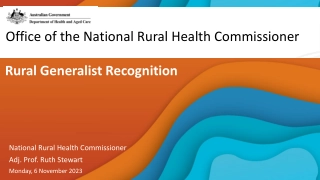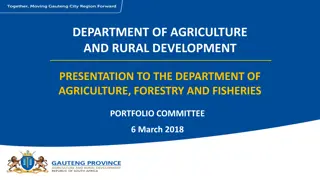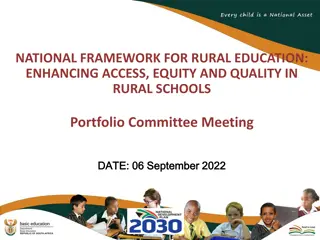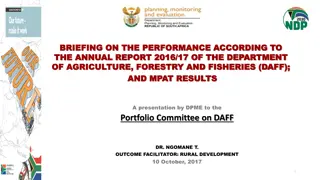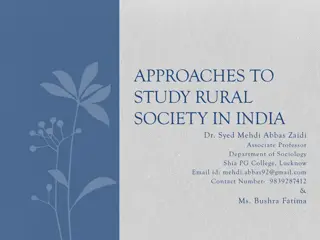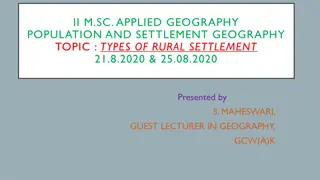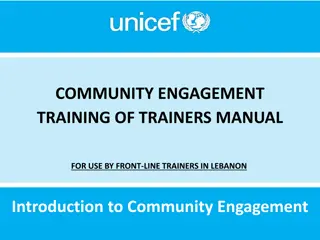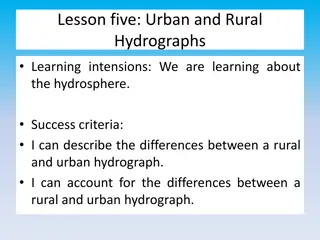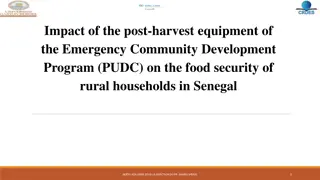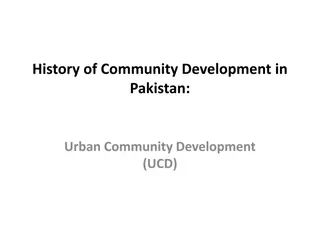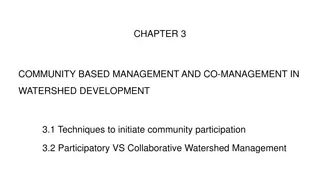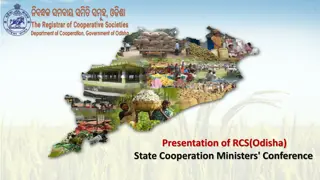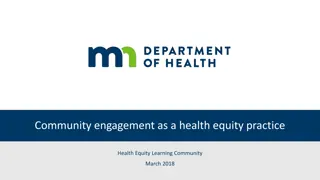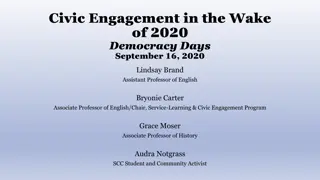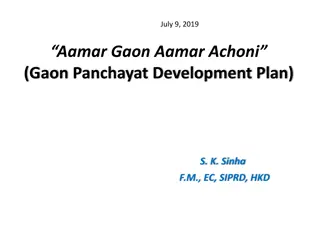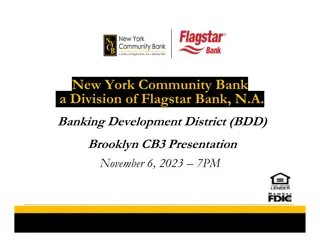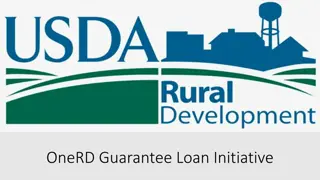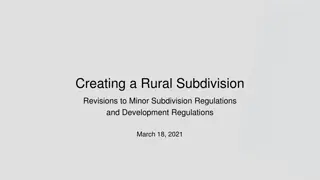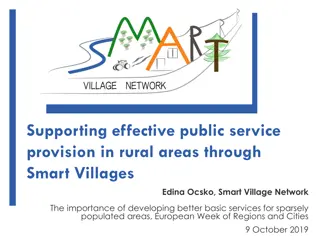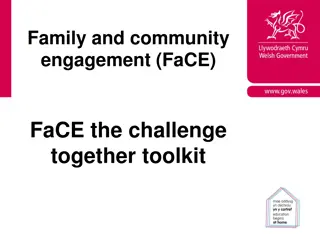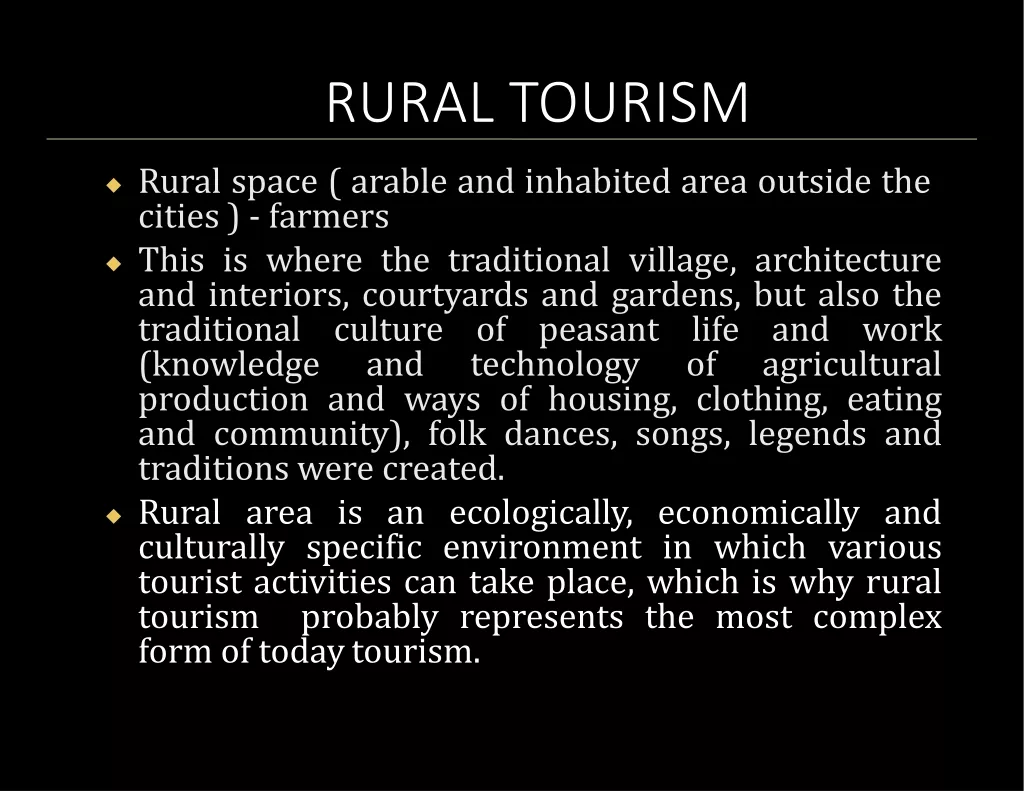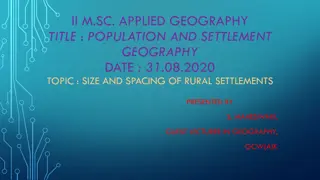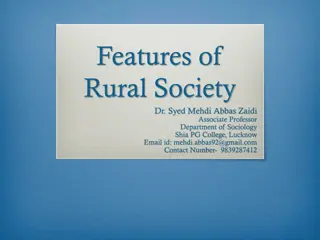Understanding Community Engagement for Rural Development
Engagement in community development encompasses various forms of interaction such as consultation, communication, and collaboration. Communities, whether defined geographically or based on shared interests, play a crucial role in shaping development initiatives. To effectively engage with communities, it is essential to understand their physical aspects, infrastructure, demographics, and history. This comprehensive understanding can lead to meaningful partnerships and sustainable rural development.
Download Presentation

Please find below an Image/Link to download the presentation.
The content on the website is provided AS IS for your information and personal use only. It may not be sold, licensed, or shared on other websites without obtaining consent from the author. Download presentation by click this link. If you encounter any issues during the download, it is possible that the publisher has removed the file from their server.
E N D
Presentation Transcript
Community Engagement For Rural Development By: Fredrick Immanuel Kindi School of Women & Gender studies
What is Engagement Engagement means many things including: consultation, communication, public participation, or working in partnership. For our purposes I take 'engagement as a generic inclusive term to describe the broad range of interactions between people. It can include a variety of approaches such as: one-way communication or information delivery, consultation, involvement and collaboration in decision-making, and empowered action in informal groups or formal partnerships
Community Community' is a broad term used to define groups of people sharing something in common, either as stakeholders or interest groups, etc. A community may be: a geographic location-where a particular group(s) of people stay a community of similar interest education community, business community, etc a community of affiliation or identity gay community, lesbian community, etc
Community Whether or not a community is defined geographically, it still has a geographic context -- a setting that it exists in. It is very important to understanding this setting. You have to get to know its people -- their culture, their concerns, and relationships -- and to develop your own relationships with them as well.
Issues to understand Physical aspects. Topography, its size and buildings. The physical properties also define the population: where they live, where they gather, the places that are important to them. The characteristics of those places can tell you a great deal about the people who make up the community.
Issues to understand Infrastructure. Roads, transportation (bicycles, mopeds , taxis, electricity, mobile telephone service. Patterns of settlement, commerce, and industry. Communities reveal their character by where and how they create living and working spaces.
Issues to understand Demographics. It's vital to understand who makes up the community. Age, gender, and ethnicity, marital status, education, number of people in household, language(s) History. The history of the community can tell you about community traditions, what the community is, or has been, proud of, and what residents would prefer not to talk about.
Issues to understand Community leaders, formal and informal Community culture, formal and informal. This covers the spoken and unspoken rules and traditions by which the community lives Existing groups. Most communities have an array of groups and organizations of different kinds -- faith groups, youth organizations, sports teams and clubs, groups formed around shared interests, etc
Issues to understand Attitudes and values. What does the community care about, and what does it ignore? What are residents' assumptions about the proper way to behave, to dress, to do business, to treat others? Is there widely accepted discrimination against one or more groups by the majority or by those in power?
importance of Taking the Time to Understand the Community Gaining a general idea of the community's strengths and the challenges it faces. Capturing unspoken, influential rules and norms. For example, if people are divided and angry about a particular issue, your information might show you an event in the community's history that explains their strong emotions on that subject. Getting a feel for the attitudes and opinions of the community when you're starting work on an initiative. Ensuring the security of your organization's staff and participants.
Providing background and justification for grant proposals. Knowing the context of the community so that you can tailor interventions and programs to its norms and culture, and increase your chances of success.
Community Engagement This is a planned process with a specific purpose of working with identified groups of people, whether they geographic location, affiliation or identify affecting their well-being. are connected interest, address by or special to issues
Form of community engagement Informing the community of policy directions of the government. Consulting the community as part of a process to develop government policy, or build community awareness and understanding. Collaborating with the community by developing partnerships to formulate options and provide recommendations.
Planning To Engage With The Community Make consultation with the relevant community stakeholders Stakeholders participate in many ways As beneficiaries Level of influence in the community In identifying needs, solutions or management of the programme
Identification of Stakeholders It will be essential to utilise a range of mechanisms and avenues to identify all the relevant stakeholders. Mechanisms such development networks organisations should identifying community particular interests and needs and how best to engage with them as community support involved stakeholders, Local and be in their
Range of stakeholders Local Residents A Community of Interest group Faith Based Groups Ethnic and Cultural Groups
Principles Of Community Engagement Be clear about the purposes and scope of the engagement and the populations you want to engage. Become knowledgeable about the community s culture, economic conditions, social networks, political and power structures, norms and values, demographic trends, history,. Learn about the community s perceptions of those initiating the engagement activities.
Principles Of Community Engagement Go to the community, establish relationships, build trust, work with the formal and informal leadership, and seek commitment from community organizations and leaders to create processes for mobilizing the community. Remember and accept that collective self- determination is the responsibility and right of all people in a community. No external entity should assume it can bestow on a community the power to act in its own self-interest.
Principles Of Community Engagement Partnering with the community is necessary to create change and improve health All aspects of community engagement must recognize and respect the diversity of the community. Awareness of the various cultures of a community and other factors affecting diversity must be paramount in planning, designing, and implementing approaches to engaging a community.
Principles Of Community Engagement Community engagement can only be sustained by identifying and mobilizing community assets and strengths and by developing the community s capacity and resources to make decisions and take action. Organizations that wish to engage a community as well as individuals seeking to effect change must be prepared to release control of actions or interventions to the community and be flexible enough to meet its changing needs.
Principles Of Community Engagement Community collaboration requires long-term commitment by the engaging organization and its partners




